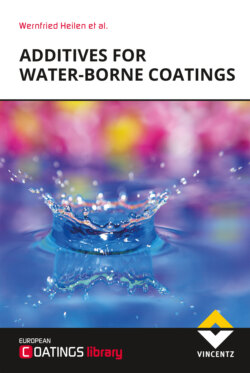Читать книгу Additives for Water-borne Coatings - Wernfried Heilen - Страница 37
На сайте Литреса книга снята с продажи.
2.5Test methods 2.5.1Particle size
ОглавлениеThe primary criterion for the quality of dispersion is the particle size. Monitoring the particle size allows a decision to be made as to when the grinding process can be terminated. The simplest method of measuring the particle size of inorganic pigments is the grindometer draw down. A sample of the mill base is poured into the deep end of a groove and scraped towards the shallow end with a flat metal scraper. At the point where the depth of the groove equals the largest particles in the suspension, irregularities (for example stripes in the draw down) will become visible. The depth of the groove is marked on a graduated scale next to it.
With some practice, use of a grindometer allows the maximum particle size of the mill base to be determined quickly and simply but cannot be used to measure pigment particle size distribution. When grinding binder-free pigments, which dry very rapidly and have particle sizes smaller than 5 µm, the grindometer can easily give a false value.
More sophisticated measurements such as laser diffraction or ultrasound give a more precise result in terms of particle size and particle size distribution. Due to their high cost, such methods are not suitable for routine use. Achievement of the desired particle size distribution can be detected by reliable secondary indications. Colour strength development of organic pigments is dependent on pigment particle size. Determining colour strength at different stages of the grinding process allows the final point of the grinding process to be detected.
